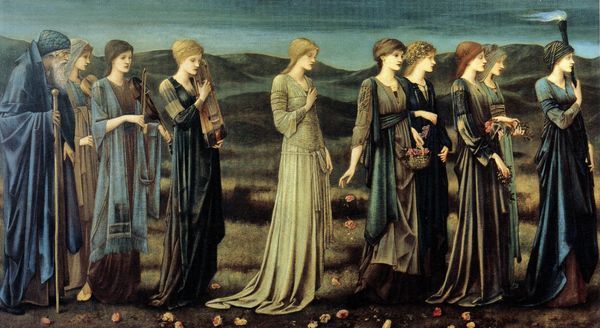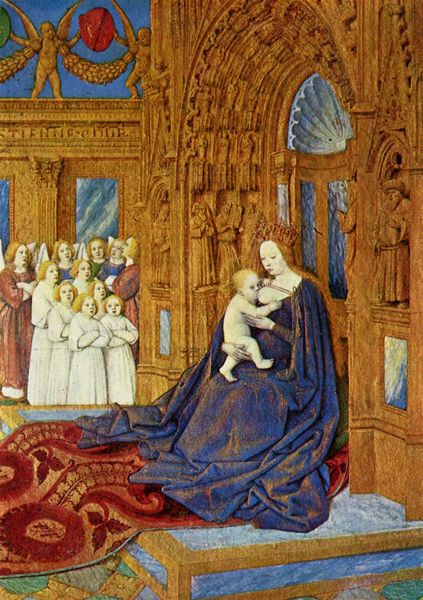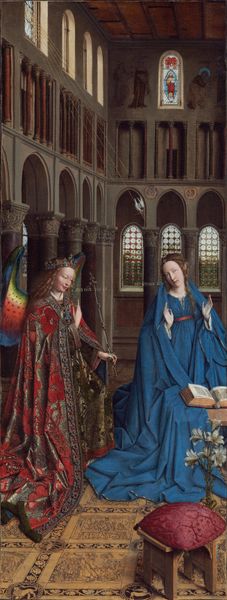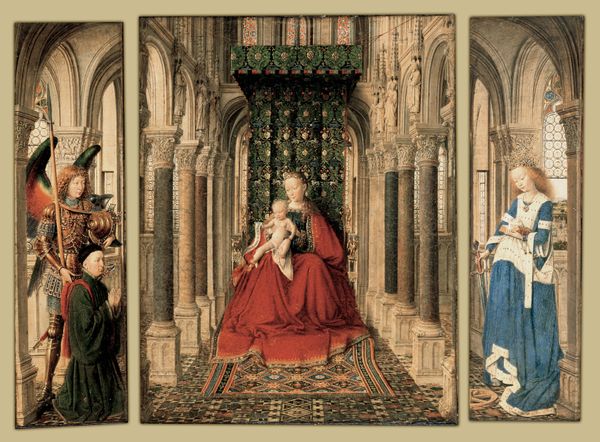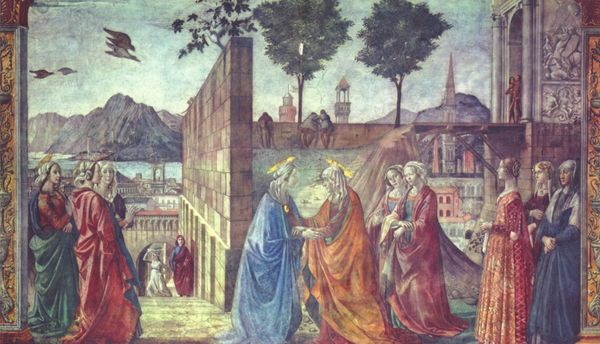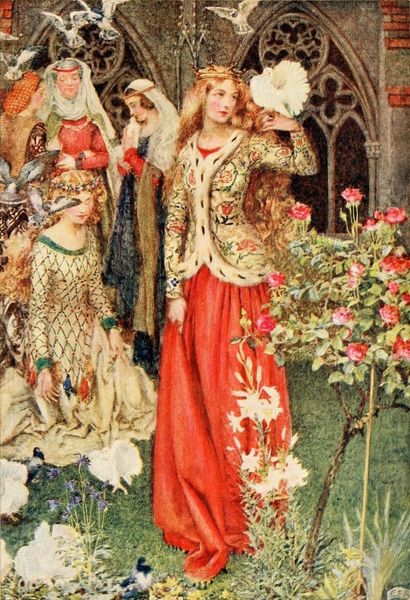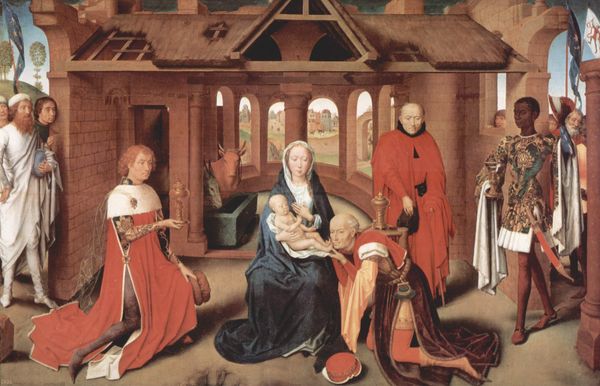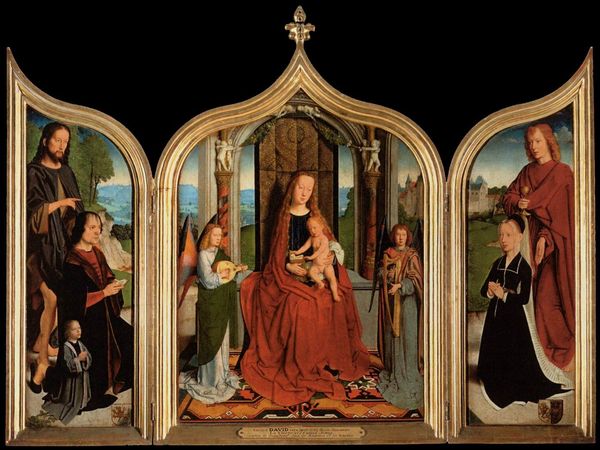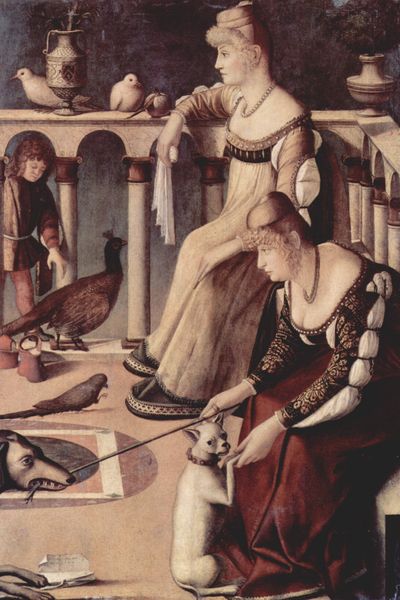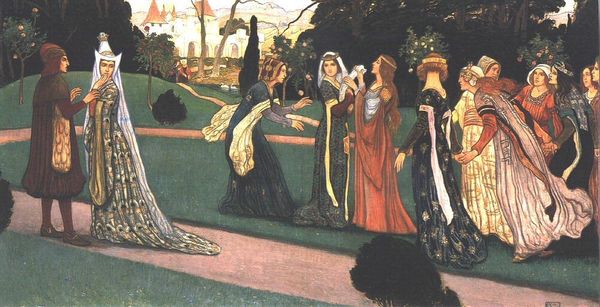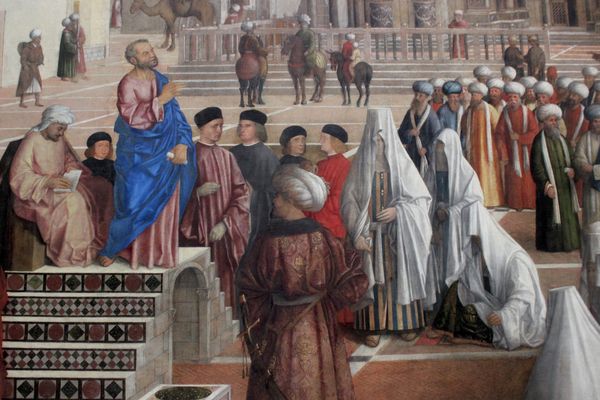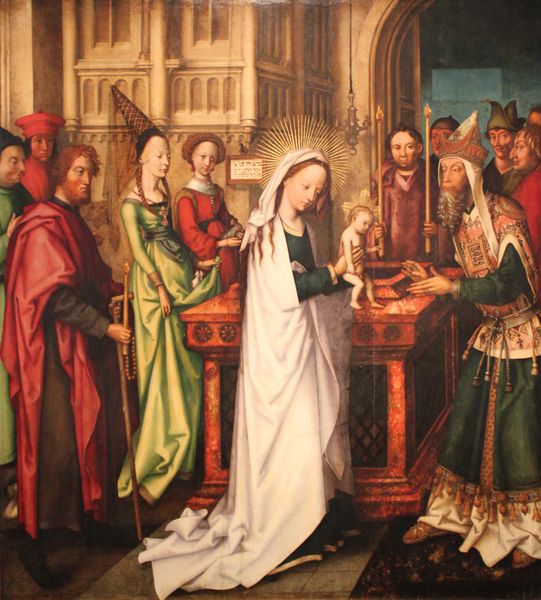
Giovanna Tornabuoni and Her Accompaniment 1488
0:00
0:00
domenicoghirlandaio
Santa Maria Novella, Florence, Italy
tempera, painting, fresco
#
portrait
#
tempera
#
painting
#
landscape
#
figuration
#
fresco
#
oil painting
#
underpainting
#
group-portraits
#
history-painting
#
italian-renaissance
#
early-renaissance
Copyright: Public domain
Curator: Today, we’re looking at Domenico Ghirlandaio's fresco, "Giovanna Tornabuoni and Her Accompaniment," completed in 1488. It is a window into Florentine society, quite literally framed within the architectural details painted on the wall of Santa Maria Novella. Editor: The composition strikes me immediately—it feels incredibly staged and formal. Each figure exists within their own space, seemingly disconnected despite their close proximity. A curious detachment hangs in the air. Curator: Indeed. Ghirlandaio employs a careful arrangement of figures within a shallow space. Notice the verticality accentuated by the city buildings, stark in their geometries. Editor: It is clear that this rigidity must stem from the iconography associated with each woman's attire; their solemn facial expressions and ornate dresses reflect cultural and family histories. Perhaps there are coded gestures here too. Curator: Precisely! One might argue each gesture operates on multiple planes of meaning within contemporary symbolic culture, carefully aligned within compositional elements: a dance of gazes, of folded hands. The textures of fabric offer another point of entry into social position, wouldn't you agree? Editor: Undoubtedly! The fabric is very telling in its varied symbolism, with the orange being evocative of marital ties; even that subtle shade of pale rose suggests underlying cultural themes from Florentine traditions. Curator: Let us not forget the setting of Florence itself as yet another visual reference, linking nobility and power to place. In every layer the geometry suggests these Florentine figures are also structures within systems. Editor: Overall, this artwork underscores the careful construction of identity within 15th century Florence, portraying it as a tapestry of interconnected symbols—offering more than it lets on at first glance. Curator: I agree, and that tapestry can be explored via attention to surface structures or deeply-rooted visual cues. This careful control, either way, reveals the very structures underlying art. Editor: A final pondering—a dialogue between artistic restraint and culturally coded narrative.
Comments
No comments
Be the first to comment and join the conversation on the ultimate creative platform.
